Disclosure: This article contains affiliate links. We may earn a commission from purchases at no extra cost to you, which helps our travel content.
The sun-drenched island of Rhodes offers more than just ancient ruins and pristine beaches—it's a gastronomic paradise that most tourists barely scratch the surface of. Having spent three weeks exploring this Dodecanese gem last summer, I was determined to decode the island's culinary DNA beyond the tourist-packed harbourfront restaurants. What I discovered was a tapestry of family-run tavernas serving dishes that have remained unchanged for generations, where the only international language needed is an appreciative smile and a hearty appetite.
Northern Rhodes: Village Gems Beyond the Medieval City
While most visitors rarely venture beyond Rhodes Town's impressive medieval walls, the true culinary treasures lie in the villages just 15-20 minutes inland. In Koskinou, with its colorful doorways and bougainvillea-draped alleys, I discovered To Palio Chorió (The Old Village), where Kyria Maria has been crafting the island's best moussaka for over 40 years. The secret? A subtle hint of cinnamon in the meat sauce and a bechamel so light it practically floats.
Just a bit further in Pastida village, O Giorgos serves a grilled octopus that would make even the most discerning Athenian weep with joy. The tentacles are tenderized the traditional way—beaten against coastal rocks—before being grilled over olive wood coals. Pair it with their house white wine, produced from local Athiri grapes.
In Afandou, don't miss Christos Taverna, where the specialty is lamb kleftiko, slow-cooked in parchment paper with mountain herbs and the creamiest lemon potatoes I've ever tasted. The restaurant sits beneath a massive plane tree that provides natural air conditioning even in the August heat. I tracked my walks between these culinary destinations using my fitness tracker, which helped me justify those extra servings of baklava!
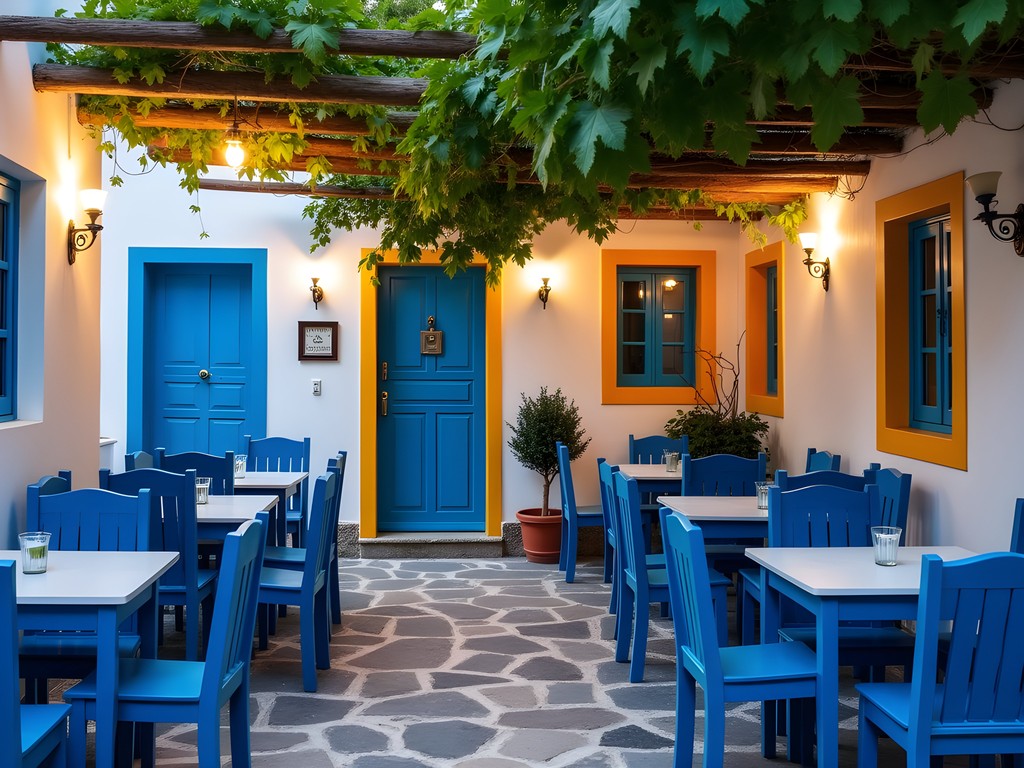
💡 Pro Tips
- Visit tavernas between 8-9pm when locals dine, not at 6pm when tourists eat
- If there's no menu, ask for 'to piatou imeras' (dish of the day)
- Look for places with older Greek couples dining—a sure sign of quality food
Coastal Treasures: Seafood Straight from the Aegean
Rhodes' 220km coastline means seafood is a staple, but finding the spots where fishermen themselves eat requires insider knowledge. In the tiny harbor of Stegna Beach, Stegna Kozas serves the morning catch with minimal fuss—just olive oil, lemon, and oregano. Their specialty is barbounia (red mullet), considered the caviar of Greek fish. The owner, Kostas, selects each fish personally from his cousin's caïque (traditional fishing boat) at dawn.
Further south in Haraki, a crescent-shaped bay with crystal waters, Argo Taverna offers a seafood meze that changed my understanding of simplicity. Their marinated anchovies (gavros marinatos) paired with a Greek ouzo transported me straight to culinary heaven. The restaurant sits directly on the pebble beach, allowing you to hear the waves while dining.
Perhaps my most memorable meal was at Perigiali in the fishing village of Gennadi. Here, I tried kakavia—the authentic Greek fisherman's soup made with whatever was caught that morning, cooked in seawater, and finished with a generous pour of Rhodian olive oil. The setting sun turning the Aegean gold while sipping their homemade souma (local spirit) created one of those perfect travel moments.
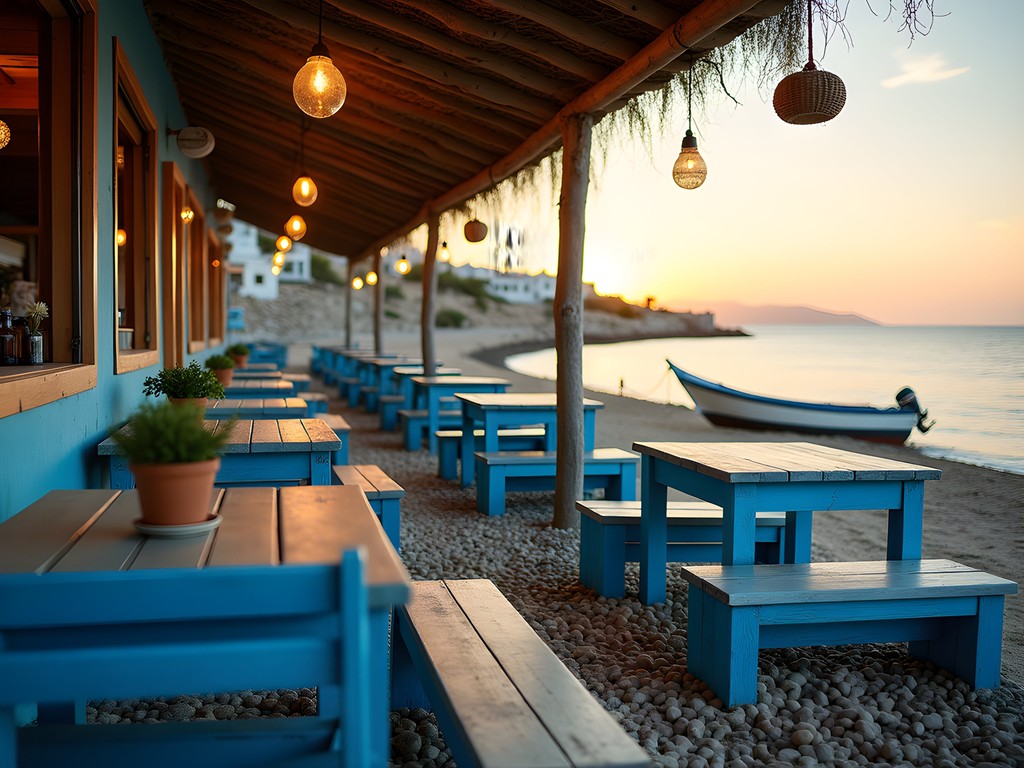
💡 Pro Tips
- Always ask for the 'psari imeras' (fish of the day) rather than ordering from a menu
- True seafood tavernas display the fresh catch on ice at the entrance
- The best coastal tavernas have no websites—look for places with fishing boats nearby
Mountain Villages: Where Time Stands Still
The interior of Rhodes reveals a completely different culinary landscape, where hearty meat dishes and foraged mountain greens dominate the menus. In Embonas, nestled at the foot of Mount Attavyros, O Platanos serves the island's most tender souvlaki, marinated in a secret blend that includes the local sweet wine, Muscat of Rhodes.
The village of Archangelos introduced me to To Koutouki tou Mihali, where Mihalis and his wife Elena prepare traditional goat with herbs that they collect from the surrounding hillsides. Their homemade bread, baked in a wood-fired oven, is perfect for soaking up the rich sauce. I brought along my insulated water bottle which kept my water cold during the hot hike to reach this hidden gem.
Perhaps the most authentic experience awaits in Apollona at O Paradeisios (The Paradise), where the menu changes daily based on what's available from local producers. Their signature dish is pitaroudia—chickpea fritters with fresh herbs that are crispy outside and velvety inside. The taverna's vine-covered terrace offers sweeping views of valleys that haven't changed in centuries. Their house wine comes in metal jugs directly from barrels stored in the cool limestone cellar beneath the restaurant.
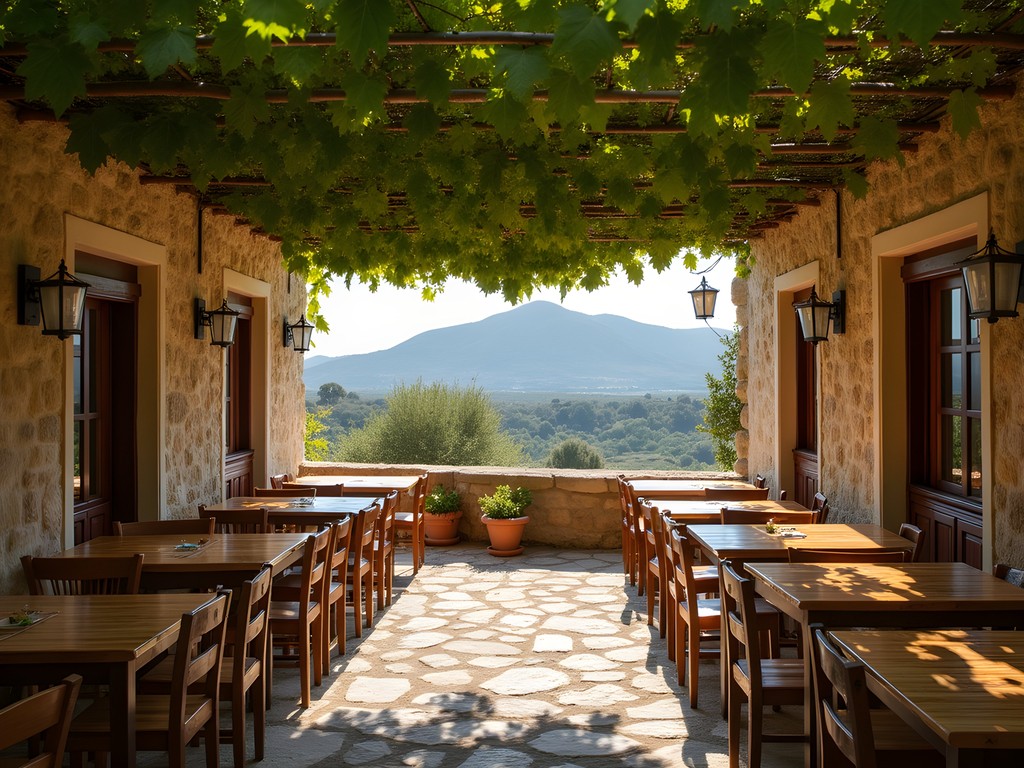
💡 Pro Tips
- In mountain tavernas, meat dishes are typically better than seafood
- Ask for 'horta' (wild greens)—a local specialty gathered from the mountainsides
- Many inland tavernas close between 3-7pm for afternoon rest, so plan accordingly
Southern Rhodes: Desert-Like Landscapes & Culinary Oases
The southern tip of Rhodes feels almost like another island entirely—windswept, less developed, and with a raw beauty that's matched by its distinctive cuisine. In Lachania, a whitewashed village that feels frozen in time, Ta Petradia (The Stones) serves a bean soup (fasolada) so hearty it's considered the Greek national dish. The owner, Dimitris, insists that the secret lies in the slow cooking—six hours minimum.
Near Prasonisi, where the Mediterranean meets the Aegean, Paralia Taverna specializes in sun-dried mackerel (gouna)—a preservation method dating back thousands of years. The fish is butterflied, salted, and dried in the intense southern Rhodes sun before being quickly grilled. It's an acquired taste but utterly authentic.
My unexpected favorite was Platanos Taverna in Vati, where I tried their signature makarounes—handmade pasta served with caramelized onions and local mizithra cheese. The pasta is rolled on a special wooden stick to create ridges that catch the sauce perfectly. The taverna has been in the same family for four generations, and their recipes haven't changed in over a century.
During my explorations of these southern villages, my portable sun hat was invaluable against the intense Mediterranean sun, especially when tavernas had limited shade during lunchtime hours.
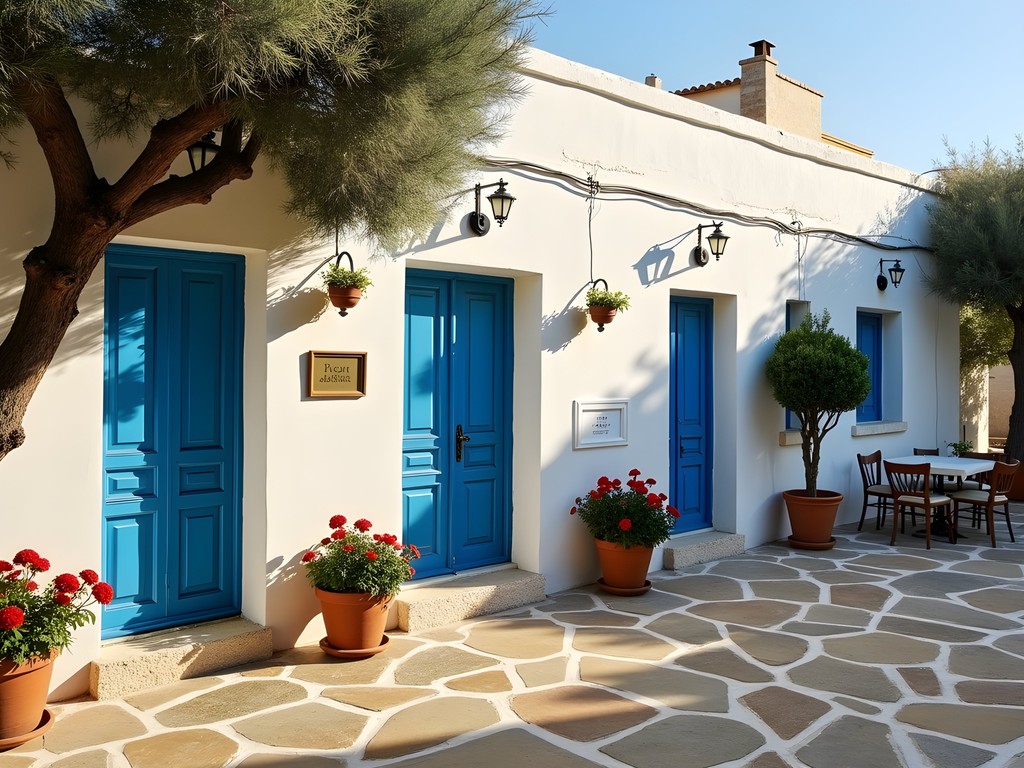
💡 Pro Tips
- In southern Rhodes, lunch is often better than dinner as many tavernas close early
- Ask for 'avgolemono'—a traditional egg-lemon sauce that elevates many local dishes
- Bring cash as most authentic southern tavernas don't accept cards
Sweet Endings: Dessert Spots Worth the Journey
No culinary exploration of Rhodes would be complete without sampling the island's traditional sweets, which reflect both Greek and Ottoman influences. In Archangelos, the bakery Paradosiako makes melekouni—a honey and sesame treat traditionally offered at weddings. Their recipe includes Rhodes pine honey, giving it a distinctive aromatic quality.
The village of Lindos, despite being touristy, hides a gem in its labyrinthine streets. Gliko Lindos specializes in galaktoboureko—semolina custard in phyllo dough soaked in citrus syrup. The owner, Kyria Sophia, has been making it the same way for 50 years, and no commercial version comes close.
Perhaps the most unusual sweet spot is To Spitiko (The Homemade) in Asklipio village, where they serve kataifi—shredded phyllo dough wrapped around chopped nuts and soaked in honey syrup. What makes theirs special is the addition of Rhodian herbs like thyme and sage in the syrup. I keep track of these culinary discoveries in my digital recipe organizer so I can attempt (usually unsuccessfully!) to recreate them at home.
For those with less of a sweet tooth, try the local yogurt with thyme honey—the bees feed on the wild thyme that grows abundantly on Rhodes' hillsides, creating a honey that's both floral and slightly savory.

💡 Pro Tips
- Greek desserts are typically shared—one portion is usually enough for two people
- Coffee and sweets are typically enjoyed in the late afternoon (5-7pm)
- Ask for 'spoon sweets'—preserved fruits in syrup that are a traditional offering in Greek homes
Final Thoughts
Rhodes may be known for its ancient wonders and golden beaches, but its true cultural heritage lives on daily in these family-run tavernas, where recipes have been passed down through generations. What strikes me most about authentic Rhodian cuisine is how it embodies the principles of sustainability that modern urban planners (like myself) are desperately trying to reintroduce—hyperlocal sourcing, zero food waste, and seasonal eating aren't trendy concepts here but simply the way things have always been done.
As Rhodes continues to develop as a tourist destination, these culinary time capsules become increasingly precious. By seeking out these authentic experiences, you're not only treating yourself to food that tastes infinitely better than what's served in tourist zones, but you're also supporting the preservation of culinary traditions that might otherwise fade away. So next time you visit Rhodes, venture beyond the medieval city walls, rent that scooter, and follow the winding roads inland. The island's soul awaits you at a wobbly table under a grapevine, accompanied by the sound of Greek conversation and the aroma of dishes that tell the story of this magnificent island better than any guidebook ever could.
✨ Key Takeaways
- The most authentic tavernas are typically family-run with the menu written only in Greek
- Villages just 15-30 minutes from tourist areas offer completely different culinary experiences
- Seasonal eating is the norm in Rhodes—what's available locally dictates the menu
- Prices at authentic tavernas are typically 30-50% lower than at tourist restaurants with far superior quality
📋 Practical Information
Best Time to Visit
May-June or September-October (avoid July-August crowds)
Budget Estimate
€25-40 per person for a full meal with wine
Recommended Duration
1 week minimum to explore different regions
Difficulty Level
Beginner


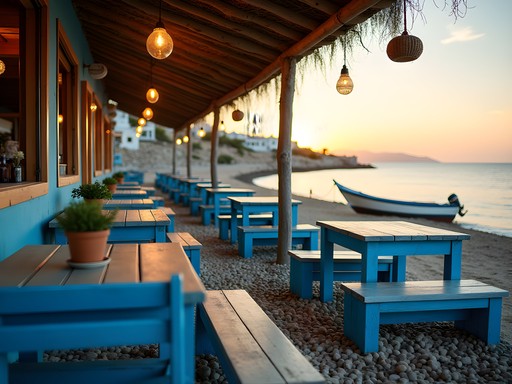
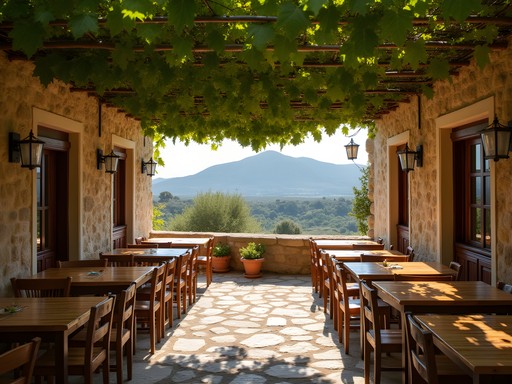
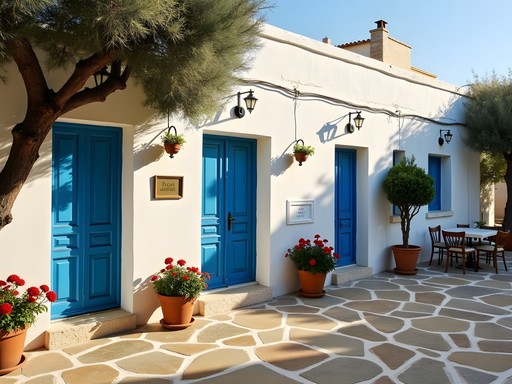











Comments
oceanninja
These photos are making me hungry! Can't wait to visit Rhodes next summer. Bookmarking this post!
explorezone
You're going to love it! Just remember to venture away from the tourist spots - the food is twice as good and half the price!
Sophia Gomez
This post brings back such wonderful memories! During my business trip to Rhodes last year, I escaped the conference hotel one evening and found myself in a tiny taverna in Asklipio. The owner didn't speak English and I don't speak Greek, but somehow we communicated through food. He just kept bringing dishes - dolmades that his mother had made that morning, a rustic bread that was still warm, and a house wine that came in a copper pitcher. No menu, no prices listed - just genuine hospitality. When I tried to pay at the end, he charged me half what I would've paid at the tourist spots. These authentic experiences are truly the soul of travel. Savannah, thank you for highlighting these gems that preserve the real culture of Rhodes!
sunnyphotographer
This is exactly the kind of experience I'm hoping to have! Was it difficult to find these places without speaking Greek?
Sophia Gomez
Not at all! Just learn a few basic phrases like 'yiasou' (hello) and 'efharisto' (thank you). The warmth and hospitality transcend any language barriers. Just be brave enough to venture away from the tourist zones!
Hunter Thompson
Just got back from Rhodes and used this guide extensively - absolute gold! The taverna in Archangelos (I think it was called To Steki tou Tsampika) was my favorite. The owner spoke barely any English but kept bringing us small plates of whatever his wife was cooking. We ended up staying for 3 hours, drinking local wine and chatting with locals who eventually translated for us. One tip for other backpackers - I found that having a Greek phrasebook really helped break the ice in these smaller villages. People genuinely appreciate even the most basic attempt at Greek!
beachnomad
Just got back from Rhodes and we tried that place in Archangelos you mentioned! The moussaka was incredible and the owners treated us like family. Best meal of our entire trip!
smartbuddy8260
What's one dish at these places that you absolutely shouldn't miss? I'm heading there next month!
beachnomad
Not the author but when I went, the pitaroudia (chickpea fritters) in the mountain villages were AMAZING. So different from the tourist versions.
Sophia Gomez
Definitely try the fresh fish at any coastal taverna - but specifically ask for 'psari imeras' (catch of the day). The way they grill it with just lemon, olive oil and oregano... perfection!
wavewalker9899
Any recommendations for the best taverna in the Southern Rhodes section? Heading there next month and would love to try one of these places, especially something with good seafood!
Savannah Kelley
For southern Rhodes, definitely try Taverna Platanos near Gennadi. It's family-run for generations and their grilled octopus is incredible - caught that morning! If you tell them you read about them here, the owner Dimitris might treat you to his homemade souma (local spirit). Enjoy your trip!
wavewalker9899
Thank you so much! Adding it to my list right now. Can't wait to try that octopus!
Frank Garcia
Fantastic write-up! I spent two weeks in Rhodes last summer and can confirm these recommendations are spot on. I'd add that the taverna in Apollakia (mentioned in the Southern Rhodes section) serves the best karavoli (snails) I've had anywhere in Greece. They cook them in a rich tomato sauce with rosemary that's absolutely divine. Also worth noting that many of these places don't take cards, so bring cash. I found using my travel dictionary incredibly helpful for deciphering menus in the more remote spots where English wasn't as widely spoken.
explorezone
This post brought back so many memories! We ventured to a tiny family-run place in one of those mountain villages last summer - I think it was near Profitis Ilias? The grandmother was cooking while her son served us. No menu, just whatever they'd made that day. We had the most incredible slow-cooked lamb with herbs I'd never tasted before. They kept bringing little dishes of things to try even though we didn't order them. THAT is the Rhodes experience most tourists miss out on!
Hunter Thompson
That sounds amazing! Did you rent a car to get up there? I'm planning a trip in September and want to hit some of these hidden spots but wondering about transportation.
explorezone
Yeah, definitely rent a car if you can. The mountain roads are a bit narrow but totally manageable. Some of these villages only get bus service once or twice a day, so having your own wheels gives you way more freedom!
beachfan
Do you need a car to reach most of these places? Or is public transport an option?
Sophia Gomez
I visited Rhodes last summer and found that while a car gives you the most flexibility (especially for the mountain villages), you can actually reach several of these spots by bus! The KTEL buses run to most villages, though sometimes with limited schedules. Just be prepared to plan around their timetables. The coastal tavernas near Lindos were accessible by the beach shuttle buses too.
sunnyphotographer
This is exactly what I've been looking for! Heading to Rhodes in April - are any of these tavernas seasonal or will most be open in spring?
beachnomad
I was there last April and most places in the mountain villages were definitely open! The coastal ones might depend on weather but worth checking.
sunnyphotographer
Thanks so much! That's really helpful.
Venture X
Premium card with 2X miles, $300 travel credit, Priority Pass